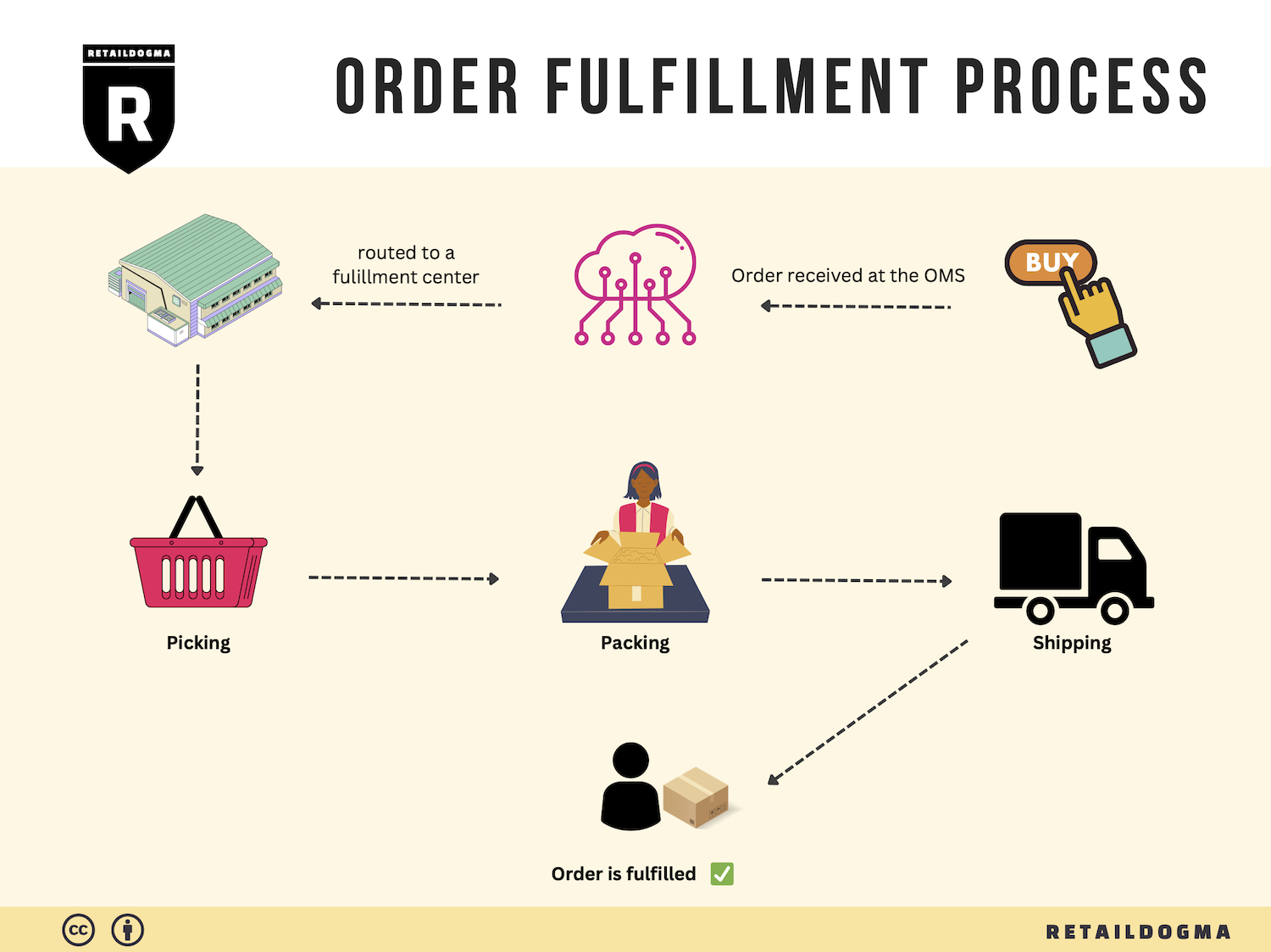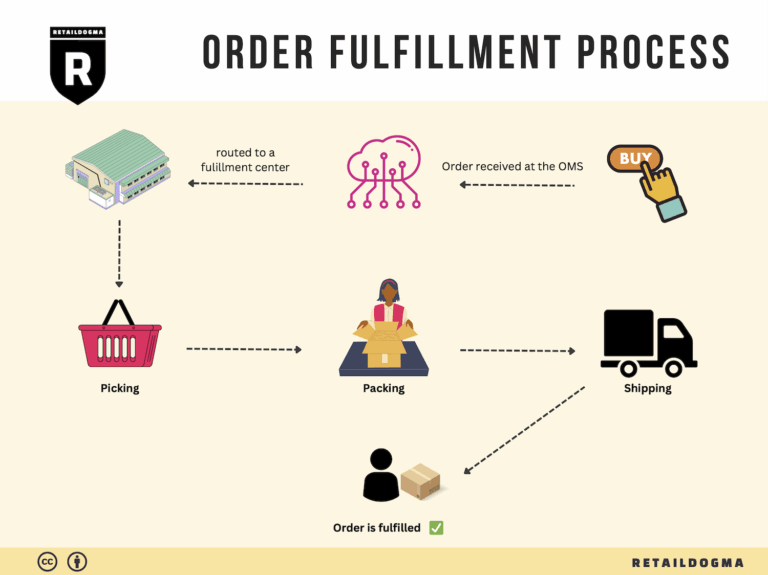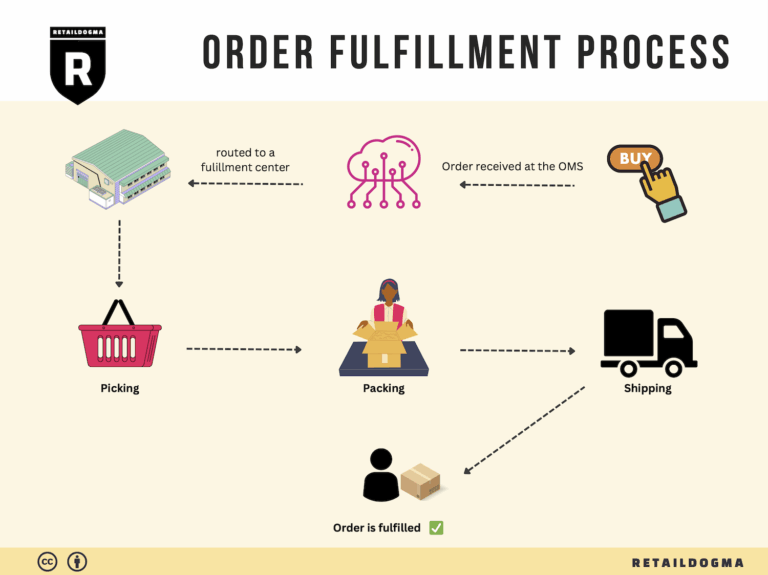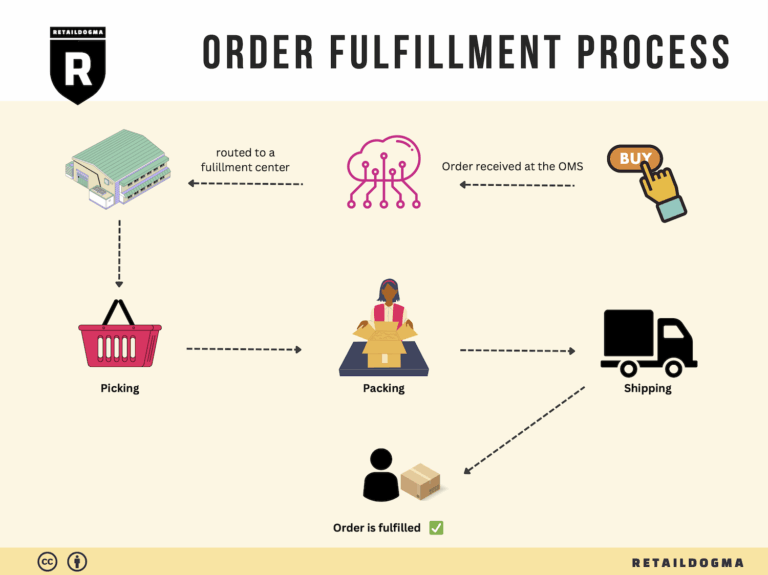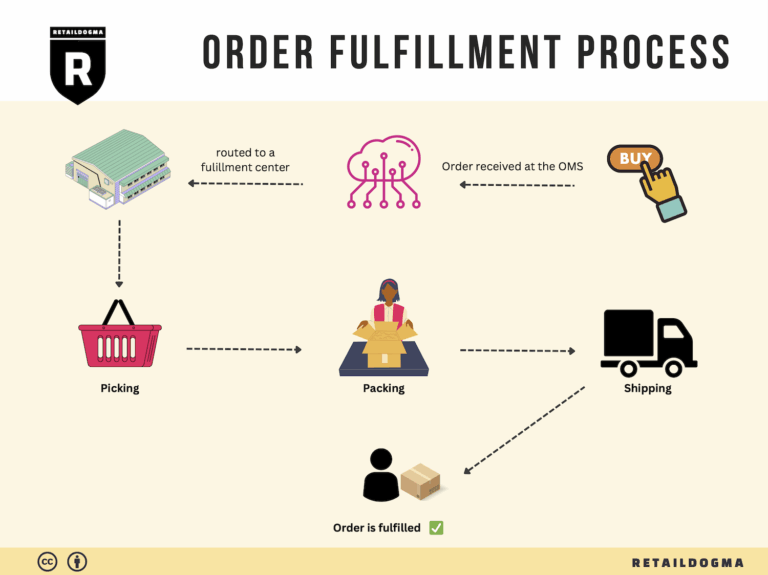What Is A Fulfillment Center? A Complete Guide (2025)
What is E-commerce Fulfillment? An Introduction for Growing Businesses
Understanding the Challenges of E-commerce Fulfillment
For many growing online businesses, the excitement of increasing sales can quickly turn into a daunting challenge. The joy of receiving orders is often overshadowed by the overwhelming task of packing and shipping those orders efficiently. As sales ramp up, the need for a streamlined fulfillment process becomes critical. This is where e-commerce fulfillment comes into play.
Defining E-commerce Fulfillment
At its core, e-commerce fulfillment is the process of getting a product from your warehouse or supplier to your customer’s doorstep. This involves several key steps: receiving inventory, storing it, processing orders, packing products, and finally, shipping them out. For businesses on the rise, mastering this process can mean the difference between satisfied customers and lost sales due to delays or errors.
What This Guide Will Cover
This guide aims to demystify e-commerce fulfillment and provide actionable insights for business owners, operations managers, and entrepreneurs. Here’s what you can expect to learn:
-
Fulfillment Models: We will explore different fulfillment options available to businesses, including third-party logistics (3PL) and Fulfillment by Amazon (FBA). Understanding these models can help you choose the right fit for your business needs.
-
Core Services: We will break down the essential services involved in e-commerce fulfillment, such as inventory management, order processing, and shipping logistics. Knowing what to look for in a fulfillment partner is crucial.
-
Choosing a Partner: Selecting the right fulfillment partner can be a game-changer. We will provide guidance on evaluating potential partners based on their capabilities, technology, and alignment with your business goals.
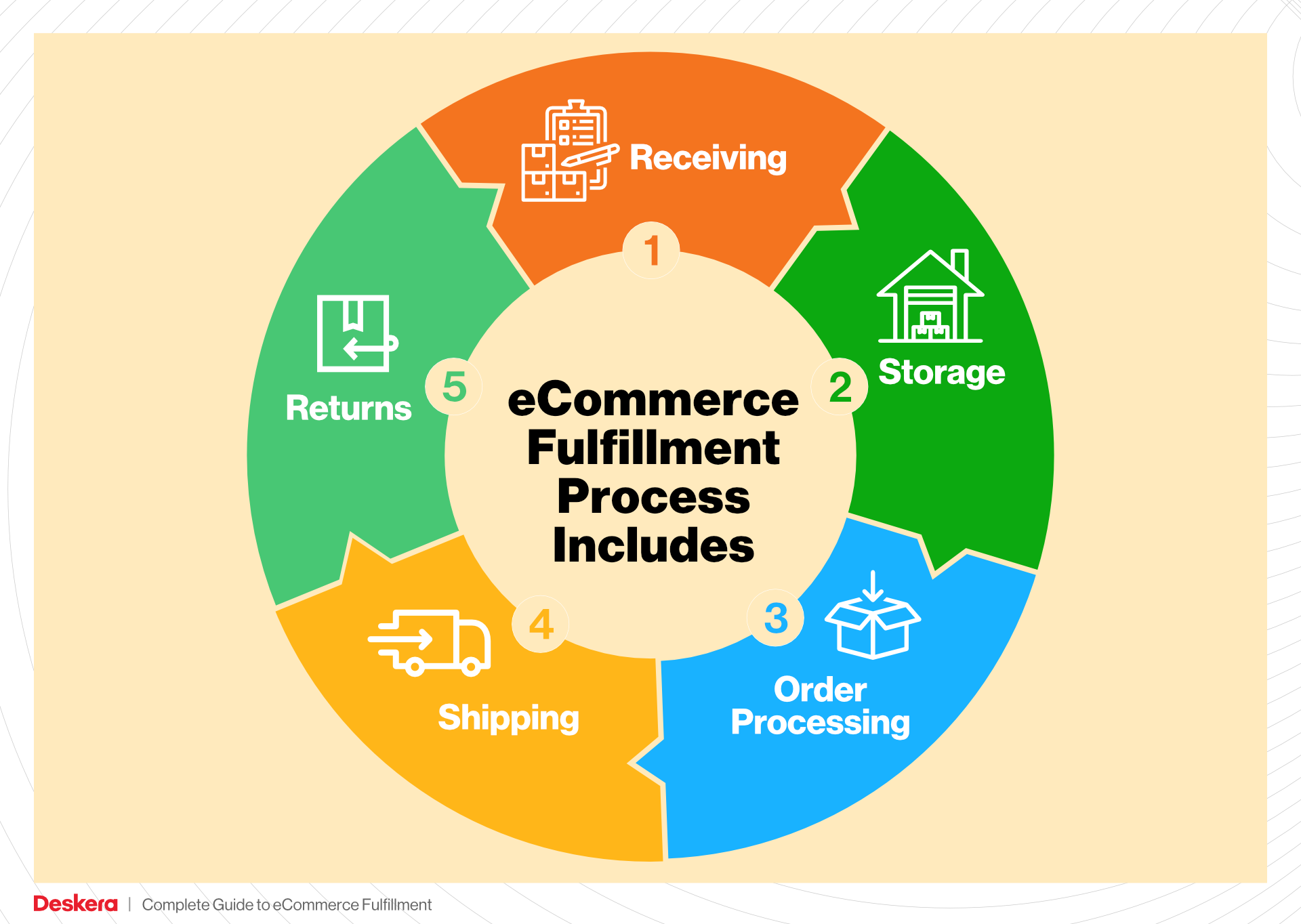
-
Pricing Structures: Fulfillment costs can vary widely. We will discuss common pricing models to help you understand how to budget for these services and ensure that your fulfillment strategy is cost-effective.
Empowering Smart Logistics Decisions
The ultimate goal of this guide is to empower you, the business owner, to make informed decisions about your logistics and fulfillment processes. With the right knowledge and strategies, you can scale your operations effectively, enhance customer satisfaction, and drive your business toward sustainable growth. By navigating the complexities of e-commerce fulfillment with confidence, you can focus on what truly matters: growing your brand and serving your customers.
What You’ll Learn In This Guide
- What is E-commerce Fulfillment? An Introduction for Growing Businesses
- The Order Fulfillment Process: From ‘Buy’ Button to Customer’s Door
- Comparing Fulfillment Models: In-House vs. 3PL vs. Dropshipping
- A Deep Dive into Amazon FBA: Pros, Cons, and Who It’s For
- Core Services Offered by Fulfillment Centers
- How to Choose a Fulfillment Partner: A 6-Point Checklist
- Understanding Fulfillment Pricing: A Breakdown of Common Fees
- Frequently Asked Questions (FAQs) about Fulfillment
- Conclusion: Is Outsourcing Fulfillment the Right Move for Your Business?
- Important Disclaimer
The Order Fulfillment Process: From ‘Buy’ Button to Customer’s Door
1. Receiving Inventory
The first step in the order fulfillment process is receiving inventory. This involves taking delivery of products from suppliers or manufacturers and confirming that the received goods match the purchase orders in terms of quantity, quality, and specifications. The key term associated with this step is SKU (Stock Keeping Unit), which is used to identify each unique product in inventory.
Receiving inventory is crucial because it sets the foundation for the entire fulfillment operation. Accurate receiving ensures that stock levels are correct, preventing future issues such as stockouts or overstock situations. Additionally, proper documentation during this phase minimizes discrepancies and enhances accountability within the supply chain. Businesses should implement a robust system for tracking SKUs and associated data to streamline this process, as this will enable better forecasting and inventory management.
2. Warehouse Storage
Once the inventory is received and verified, the next step is warehouse storage. This process involves organizing and placing products in designated storage areas within the warehouse. Effective storage management utilizes bin locations, which are specific areas in the warehouse assigned to certain products, facilitating easier retrieval.
The importance of warehouse storage cannot be overstated. A well-organized warehouse optimizes space and improves picking efficiency, ultimately leading to faster order fulfillment. Moreover, clear bin locations help reduce the time spent searching for items and can significantly lower labor costs. To enhance efficiency, businesses should consider implementing a Warehouse Management System (WMS) that integrates with their e-commerce platform, allowing real-time tracking of inventory levels and locations.
3. Order Picking
Order picking is the process of selecting and retrieving items from the warehouse to fulfill customer orders. This step often utilizes pick lists, which are documents or digital lists that detail the items and quantities needed for each order. Efficient order picking is vital for maintaining customer satisfaction, as it directly affects delivery speed and accuracy.
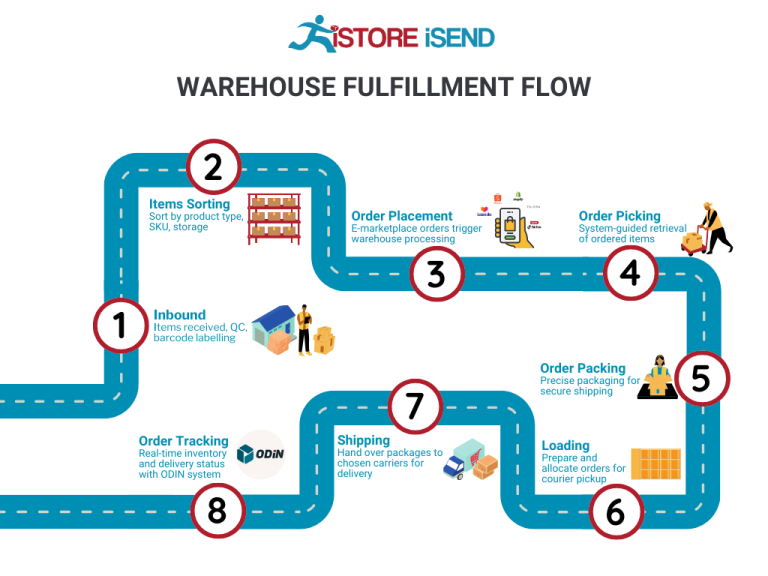
This step is important because mistakes during picking can lead to incorrect orders, resulting in returns, dissatisfied customers, and increased operational costs. Businesses can adopt various picking methods, such as single order picking, batch picking, or zone picking, depending on their order volume and warehouse layout. Implementing technology like barcode scanners or mobile picking devices can also enhance accuracy and speed during this phase, further improving operational efficiency.
4. Order Packing
After items are picked, they move to the order packing stage. This involves securely packaging the products for shipment, ensuring they are protected during transit. Key considerations during packing include choosing appropriate materials and creating packing slips, which are documents that list the items included in the shipment.
Packing is a critical step because it directly impacts the customer’s experience. Properly packed orders reduce the risk of damage during shipping, which can lead to customer dissatisfaction and increased return rates. Businesses should establish packing standards and consider using eco-friendly materials, as sustainability is becoming increasingly important to consumers. Moreover, employing automated packing systems can enhance efficiency, especially for businesses with high order volumes.
5. Shipping & Delivery
The final step in the order fulfillment process is shipping and delivery. This phase involves selecting a carrier, generating shipping labels, and dispatching orders to customers. A vital term in this context is last-mile delivery, which refers to the final leg of the shipping journey from a distribution center to the customer’s doorstep.
Shipping is essential because it influences delivery speed, costs, and ultimately, customer satisfaction. Businesses should evaluate multiple shipping options to find the best balance between cost and delivery speed. Offering various shipping methods, including expedited options, can enhance customer experience and increase sales. Additionally, providing customers with tracking information allows them to monitor their orders, fostering transparency and trust.
In summary, mastering the order fulfillment process is key to scaling an e-commerce business. Each step—receiving inventory, warehouse storage, order picking, order packing, and shipping & delivery—plays a crucial role in ensuring operational efficiency and customer satisfaction. By leveraging technology and implementing best practices, businesses can optimize their fulfillment operations, leading to increased sales and enhanced brand loyalty.
Comparing Fulfillment Models: In-House vs. 3PL vs. Dropshipping
Fulfillment Model Comparison
| Model | Who Handles Inventory | Best For (Business Stage) | Key Advantage | Key Disadvantage |
|---|---|---|---|---|
| In-House Fulfillment | Business (Owner/Staff) | Startups, Established | Full control over inventory | High upfront costs and overhead |
| Third-Party Logistics (3PL) | 3PL Provider | Scaling Businesses | Scalability and expertise | Less control over logistics |
| Dropshipping | Supplier | New Entrepreneurs | Low initial investment | Lower profit margins |
In-House Fulfillment
In-house fulfillment involves managing your entire inventory and order processing within your own facilities. This model is often favored by startups and established businesses that want to maintain complete control over their inventory, shipping, and customer service processes. By handling fulfillment internally, businesses can ensure quality control, customize packaging, and provide a unique customer experience. However, this approach comes with significant challenges, including high upfront costs for warehouse space, staffing, and technology. Additionally, the business bears the full responsibility for managing the supply chain, which can be overwhelming, especially during peak seasons. This model may be ideal for brands that prioritize quality and brand experience over scalability and cost-efficiency.
Third-Party Logistics (3PL)
Third-party logistics (3PL) providers manage logistics and fulfillment services for businesses, offering a solution that is particularly beneficial for companies looking to scale. Businesses can outsource warehousing, inventory management, and shipping to a 3PL provider, allowing them to focus on core operations like marketing and product development. This model is advantageous because it provides access to expert logistics services, technology, and scalability without the need for significant upfront investment. However, businesses may encounter challenges with less control over the fulfillment process, which can impact customer experience. Additionally, reliance on a third party may introduce complexities in communication and coordination, making it essential to select a reliable partner that aligns with your operational goals.
Dropshipping
Dropshipping is a fulfillment model where the retailer does not keep goods in stock but instead transfers customer orders and shipment details to a manufacturer or wholesaler, who then ships the products directly to the customer. This model is particularly appealing for new entrepreneurs or those testing a business idea because it requires minimal upfront investment and inventory risk. Retailers can offer a wide variety of products without the financial burden of purchasing and storing inventory. However, dropshipping can lead to lower profit margins due to the reliance on third-party suppliers and can result in longer shipping times, which may affect customer satisfaction. Additionally, businesses have limited control over product quality and inventory levels, making it crucial to work with trustworthy suppliers to maintain brand integrity.
A Deep Dive into Amazon FBA: Pros, Cons, and Who It’s For
Understanding Fulfillment by Amazon (FBA)
Fulfillment by Amazon (FBA) is a service offered by Amazon that allows sellers to store their products in Amazon’s fulfillment centers. Amazon takes care of storage, packaging, shipping, and customer service on behalf of the seller. This model is designed to streamline the logistics of e-commerce, making it easier for businesses to reach customers while leveraging Amazon’s extensive infrastructure.
How FBA Works
-
Product Listing and Inventory: Sellers create product listings on Amazon and send their inventory to Amazon’s fulfillment centers. This inventory is then stored until it is sold.
-
Order Processing: When a customer places an order for a product listed as FBA, Amazon handles the entire fulfillment process. This includes picking the product from the warehouse, packing it, and shipping it directly to the customer.
-
Customer Service and Returns: Amazon also manages customer inquiries and handles returns for FBA products, allowing sellers to focus on other aspects of their business.
-
Fees: Sellers are charged fees for using FBA, which include a monthly storage fee for the inventory and a per-unit fulfillment fee for each product sold.
Pros of Using FBA
-
Prime Eligibility: One of the most significant advantages of FBA is that products become eligible for Amazon Prime. This status can lead to increased visibility and sales, as Prime members often prefer products that offer fast, free shipping.
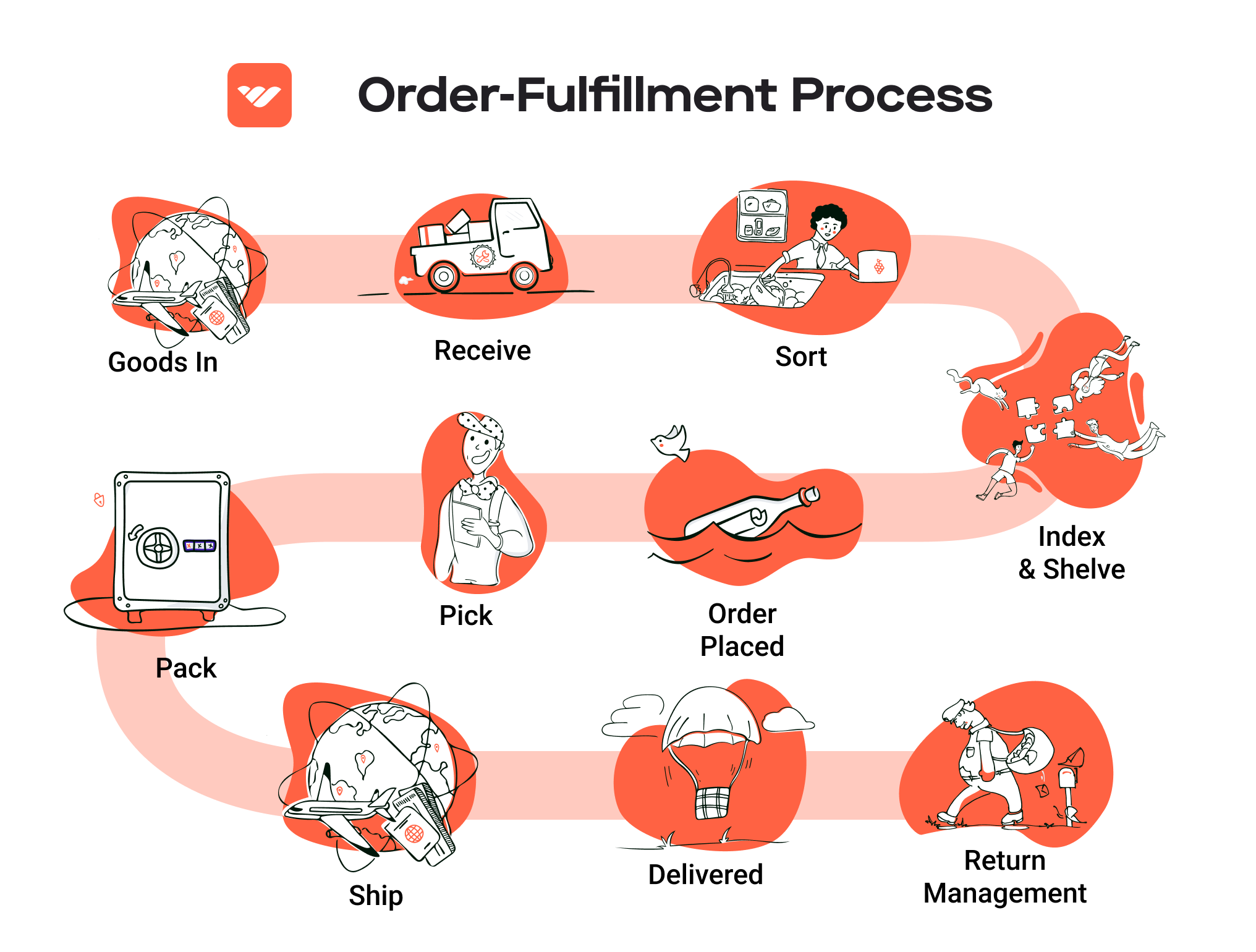
-
Customer Trust: Amazon has built a reputation for reliability and customer service. By using FBA, sellers can benefit from Amazon’s brand trust, which can encourage customers to purchase their products over those of competitors.
-
Multi-Channel Fulfillment: FBA allows sellers to fulfill orders from other sales channels (like their own website) using Amazon’s infrastructure. This means sellers can centralize their inventory and streamline their operations across multiple platforms.
-
Scalability: FBA can help businesses scale quickly without the need to invest heavily in logistics. Sellers can increase their inventory and expand their product offerings without worrying about fulfillment logistics.
-
Advanced Analytics: Amazon provides sellers with detailed reports and analytics through their Seller Central dashboard, enabling them to make data-driven decisions regarding inventory, pricing, and sales strategies.
Cons of Using FBA
-
High Fees: While FBA provides many advantages, the associated costs can be significant. Sellers face various fees, including storage fees for inventory and fulfillment fees for each sale. These can add up quickly, especially for businesses with low margins.
-
Strict Inventory Rules: Amazon has stringent policies regarding inventory management, including restrictions on the types of products that can be fulfilled by FBA. Sellers must adhere to these guidelines, which can limit flexibility.
-
Commingling Risks: When using FBA, sellers’ products are stored alongside those of other sellers. This commingling can lead to issues with quality control, as customers may receive items that are damaged or not as described. Additionally, it complicates the process of managing returns and refunds.
-
Limited Control: Once inventory is sent to Amazon, sellers have limited control over their products. This can be challenging if issues arise with inventory management or fulfillment.
-
Inventory Management Challenges: Managing inventory levels effectively can be challenging, especially with FBA’s storage fees that increase during peak seasons. Sellers must carefully forecast demand to avoid excess inventory and associated costs.
Who is FBA Best For?
Fulfillment by Amazon is particularly well-suited for certain types of e-commerce businesses:
-
Startups and Small Businesses: For new sellers or small businesses looking to scale quickly, FBA offers a way to leverage Amazon’s massive customer base and fulfillment capabilities without investing heavily in logistics.
-
Sellers with High Volume: Businesses that can maintain a high sales volume benefit significantly from the efficiency and speed of FBA, as the costs can be offset by increased sales.
-
Brands Seeking Visibility: Companies aiming to enhance their online visibility and gain customer trust can leverage FBA’s Prime eligibility to attract more customers.
-
Multi-Channel Sellers: Businesses that sell on multiple platforms can benefit from FBA’s multi-channel fulfillment capabilities, allowing for streamlined logistics across different sales channels.
-
Product Categories with High Demand: Sellers with products that have consistent demand can optimize their inventory management and take advantage of Amazon’s logistics without the fear of high storage fees.
In conclusion, Fulfillment by Amazon presents a robust solution for many e-commerce businesses, providing a blend of convenience and efficiency. However, potential users must weigh the benefits against the costs and operational challenges to determine if FBA aligns with their business model and growth aspirations.
Core Services Offered by Fulfillment Centers
Inventory Management & Warehousing
Effective inventory management is the cornerstone of successful e-commerce operations. Fulfillment centers provide sophisticated warehousing solutions that enable businesses to store, track, and manage their inventory efficiently. These centers utilize advanced technology, such as Warehouse Management Systems (WMS), to monitor stock levels, forecast demand, and optimize storage space.
Benefits:
– Real-time Visibility: By integrating inventory management systems, e-commerce businesses gain real-time insights into stock availability, which helps prevent stockouts and overstock situations. This visibility allows for better decision-making regarding purchasing and sales strategies.
– Cost Efficiency: Centralized warehousing reduces the overhead costs associated with maintaining multiple storage facilities. Fulfillment centers often have the infrastructure to handle large volumes, allowing businesses to benefit from economies of scale.
– Scalability: As a business grows, fulfillment centers can quickly adapt to increased inventory demands without the need for significant capital investment in new warehouse facilities.
Pick and Pack Services
Pick and pack services are essential for any e-commerce business that relies on order fulfillment. This process involves selecting the correct products from inventory (picking) and packaging them for shipment (packing). Fulfillment centers employ trained staff and automated systems to streamline this process, ensuring accuracy and efficiency.
Benefits:
– Speed and Accuracy: Fulfillment centers are equipped with optimized picking processes that minimize errors and reduce order fulfillment times. This speed is crucial for maintaining customer satisfaction, particularly in an era where fast shipping is often expected.
– Customization: Many fulfillment centers offer customizable packing options, allowing businesses to create a unique unboxing experience for their customers. This can enhance brand loyalty and encourage repeat purchases.
– Reduced Labor Costs: Outsourcing pick and pack operations allows e-commerce businesses to minimize labor costs and focus on core competencies, such as marketing and product development.
Kitting and Assembly
Kitting and assembly services involve the grouping of various products into a single package or kit, often enhancing the appeal of the product offering. For example, a fulfillment center might assemble gift sets or product bundles that are sold together. This service is particularly beneficial for businesses looking to offer unique product combinations or streamline their inventory.
Benefits:
– Enhanced Product Offering: By providing kitting services, fulfillment centers enable e-commerce businesses to offer bundled products that can attract more customers and increase average order value. This strategy can be particularly effective during holidays or promotional events.
– Efficient Assembly Processes: Fulfillment centers have the resources and expertise to efficiently assemble kits, reducing the burden on in-house teams. This efficiency can lead to faster turnaround times and the ability to meet customer demands more effectively.
– Inventory Management: Kitting can simplify inventory management by allowing businesses to manage fewer individual SKUs while still offering a diverse product range. This can lead to improved forecasting and inventory turnover rates.
Returns Management (Reverse Logistics)
Returns management, or reverse logistics, is a critical aspect of the e-commerce fulfillment process. It involves handling returned products, processing refunds, and managing inventory restocking. Effective returns management can significantly impact customer satisfaction and retention.
Benefits:
– Streamlined Processes: Fulfillment centers specialize in managing returns, ensuring that the process is efficient and hassle-free for both the business and the customer. This includes inspecting returned items, determining their resale status, and restocking them appropriately.
– Customer Satisfaction: A straightforward returns process enhances the customer experience, encouraging repeat purchases and positive reviews. In today’s competitive market, a flexible return policy can be a key differentiator.
– Data Insights: Returns management can provide valuable data insights into customer preferences and product performance. By analyzing return reasons, businesses can identify areas for improvement in product offerings and quality, leading to better decision-making and reduced return rates.
In conclusion, partnering with a fulfillment center offers a range of core services that can significantly enhance the efficiency and effectiveness of e-commerce operations. From inventory management to returns handling, these services provide the necessary infrastructure and expertise for businesses looking to scale their logistics and sales. By leveraging these services, e-commerce businesses can focus on growth while ensuring their logistics operations are optimized for success.
How to Choose a Fulfillment Partner: A 6-Point Checklist
Location & Warehouse Network
Importance:
The geographical location of your fulfillment partner can significantly impact shipping times and costs. A strategically positioned warehouse network enables faster delivery to your customers, which is crucial in today’s e-commerce landscape where consumers expect quick shipping.
Questions to Ask:
– Where are your warehouses located, and how does that align with my primary customer base?
– How do you handle shipping to different regions or countries?
– What is your average shipping time for various locations?
Technology & Integrations
Importance:
In a data-driven environment, the technology used by your fulfillment partner plays a pivotal role in efficiency and accuracy. Seamless integration with your existing e-commerce platforms can streamline operations, automate processes, and improve inventory management.
Questions to Ask:
– What technology platforms do you use for inventory management and order processing?
– Can your systems integrate with my current e-commerce platform (e.g., Shopify, WooCommerce)?
– Do you provide real-time tracking for orders and inventory updates?
Specializations (e.g., cold storage, oversized items)
Importance:
Different businesses have unique needs, and not all fulfillment partners are equipped to handle specialized products. Whether you require cold storage for perishables or facilities for oversized items, it’s essential to partner with a 3PL that has the necessary capabilities.
Questions to Ask:
– Do you offer specialized services such as cold storage, hazardous materials handling, or oversized item fulfillment?
– What are your processes for handling these specialized products?
– Can you provide case studies or references for businesses with similar needs?
Scalability & Capacity
Importance:
As your business grows, your fulfillment needs will evolve. A capable partner should be able to scale operations in line with your growth, whether that’s during peak seasons or as you expand your product line.
Questions to Ask:
– How do you manage seasonal fluctuations in order volume?
– What is your maximum capacity for order fulfillment, and how quickly can you scale?
– Can you accommodate potential future needs, such as additional SKUs or increased shipping demands?
Pricing and Contracts
Importance:
Understanding the pricing structure and contract terms is crucial to avoid unexpected costs. Transparent pricing allows you to budget effectively and ensures you are not caught off guard by hidden fees.
Questions to Ask:
– What is your pricing model (e.g., per order, per item, monthly fees)?
– Are there any additional fees for storage, handling, or shipping?
– What are the terms of the contract, and is there flexibility for renegotiation based on changing needs?
Customer Support & Reviews
Importance:
Effective customer support can make or break your relationship with a fulfillment partner. Quick, reliable communication can resolve issues before they escalate, keeping your operations running smoothly.
Questions to Ask:
– What level of customer support do you provide (e.g., dedicated account manager, 24/7 support)?
– How do you handle issues or errors in order fulfillment?
– Can you provide references or reviews from current clients to gauge your service quality?
Conclusion
Choosing the right fulfillment partner is a critical decision that can influence your e-commerce business’s success. By systematically evaluating potential partners against this checklist, you can ensure that your logistics and fulfillment operations are not only efficient but also scalable and aligned with your business goals. In a competitive marketplace, the right partner can provide the edge you need to enhance customer satisfaction and drive growth.
Understanding Fulfillment Pricing: A Breakdown of Common Fees
Initial Setup Fees
Initial setup fees are typically charged when you first engage a fulfillment service. These fees cover the costs associated with onboarding your business, which may include system integration, account setup, and the configuration of your inventory management system. The exact amount can vary significantly depending on the complexity of your operations and the fulfillment provider’s policies.
To calculate initial setup fees, fulfillment centers often assess the time required to integrate your systems, the number of products you have, and any unique requirements your business may present. Some providers may offer a flat fee, while others may charge based on the specific services rendered. It’s essential to clarify what services are included in these fees to avoid unexpected costs.
Receiving Fees
Receiving fees are charged for the process of accepting and processing your inventory once it arrives at the fulfillment center. This fee typically covers the labor involved in unloading shipments, inspecting products, and entering them into the inventory management system.
Receiving fees are usually calculated per unit or per shipment, depending on the provider. For example, you might be charged a flat rate per pallet or per box, or you could pay based on the total number of items received. Understanding how these fees are structured can help you budget for incoming inventory and streamline your operations.
Storage Fees (per pallet/bin)
Storage fees are charged for the space your inventory occupies in the fulfillment center. These fees can vary based on the size and type of storage used, whether it’s pallet storage or bin storage. Generally, storage fees are calculated on a monthly basis and can be charged per pallet, per bin, or per cubic foot.
To effectively manage storage costs, it’s crucial to have a good understanding of your inventory turnover rate. High inventory turnover can help minimize storage fees, while slow-moving products may lead to increased costs over time. Additionally, some fulfillment centers may offer tiered pricing based on volume, which can be beneficial for businesses with larger inventories.
Pick & Pack Fees (per item/order)
Pick and pack fees are incurred for the labor involved in selecting items from inventory and preparing them for shipment. This process includes picking the items, packing them securely, and labeling them for delivery.
These fees are usually calculated on a per-item or per-order basis. For instance, you might be charged a flat rate for the first item in an order and a reduced rate for each additional item. Understanding the nuances of pick and pack pricing can help you optimize your order fulfillment strategy and manage costs effectively, especially during peak sales periods.
Shipping Fees
Shipping fees are typically the most variable and can significantly impact your overall fulfillment costs. These fees depend on several factors, including the shipping method (standard, expedited, etc.), destination, package weight, and dimensions.
Fulfillment centers usually calculate shipping fees based on real-time carrier rates, which can fluctuate based on fuel costs, demand, and other market conditions. Some providers offer discounted shipping rates through partnerships with major carriers, which can be advantageous for businesses looking to reduce shipping expenses.
When negotiating shipping fees, consider the overall customer experience, as faster shipping options may enhance customer satisfaction even if they come at a higher cost.
Tips for Getting an Accurate Quote
-
Be Transparent: Provide detailed information about your inventory size, order volume, and unique requirements. The more information you offer, the more accurate the quote will be.
-
Request Itemized Quotes: Ensure that your quote breaks down all potential fees, including setup, receiving, storage, pick and pack, and shipping. This will help you understand the full scope of costs.
-
Inquire About Volume Discounts: If you anticipate high order volumes, ask about bulk pricing or discounts for larger shipments, which could significantly reduce your costs.
-
Understand Pricing Models: Different fulfillment centers may use various pricing models. Familiarize yourself with these to compare quotes effectively and identify the best fit for your business needs.
-
Consider Long-Term Relationships: Establishing a long-term relationship with a fulfillment provider can sometimes lead to better pricing and improved service levels. Don’t hesitate to negotiate terms based on your business growth projections.
By understanding these common fulfillment pricing structures and how they are calculated, e-commerce business owners can make more informed decisions, optimize their logistics operations, and ultimately enhance their bottom line.
Frequently Asked Questions (FAQs) about Fulfillment
1. What is Maverick Fulfillment?
Maverick Fulfillment is a third-party logistics (3PL) provider specializing in innovative, technology-driven solutions for logistics, warehousing, and order fulfillment. Founded in 2020, they offer customized services to streamline inventory management and enhance supply chain efficiency for e-commerce businesses.
2. What services does Maverick Fulfillment offer?
Maverick Fulfillment provides a range of services including:
– Warehousing and Inventory Management: Secure storage and efficient tracking of products.
– Order Fulfillment: Automated processes to manage order receipt, processing, and shipping.
– Shipping and Logistics Solutions: Cost-effective shipping options tailored to business needs.
– Integration Services: Seamless integration with existing e-commerce platforms and systems for streamlined operations.
3. How does Maverick Fulfillment integrate with my existing systems?
Maverick Fulfillment focuses on ensuring seamless integration with your pre-existing e-commerce platforms and systems. This means they can work with your current software to manage orders, inventory, and shipping processes without requiring a complete system overhaul.
4. What is the difference between a warehouse and a fulfillment center?
A warehouse is primarily a storage facility where goods are kept until needed. In contrast, a fulfillment center is a specialized warehouse that not only stores products but also processes orders for shipping directly to customers. Fulfillment centers are designed for efficiency in order processing and shipping.
5. What is a 3PL (Third-Party Logistics)?
A 3PL, or third-party logistics provider, is a company that offers logistics services to businesses, including warehousing, fulfillment, and transportation. By outsourcing these functions to a 3PL like Maverick Fulfillment, businesses can focus on core activities such as marketing and sales while leveraging the expertise and resources of the 3PL to manage logistics.
6. How much do fulfillment services cost?
The cost of fulfillment services can vary widely based on several factors, including:
– Volume of orders
– Storage space required
– Types of products being stored and shipped
– Specific services needed (e.g., packaging, kitting)
Typically, fulfillment costs include storage fees, picking and packing fees, and shipping costs. It’s best to consult directly with Maverick Fulfillment for a tailored quote based on your specific needs.
7. How can I improve my order fulfillment process?
To enhance your order fulfillment process, consider:
– Streamlining Inventory Management: Use inventory management software to track stock levels and predict demand accurately.
– Optimizing Order Processing: Automate as much of the order processing as possible to reduce human error and speed up delivery times.
– Choosing the Right Fulfillment Partner: Partner with a 3PL like Maverick Fulfillment that understands your business needs and can scale with you.
8. What role does data play in fulfillment?
Data plays a critical role in fulfillment by providing insights into inventory levels, order processing times, shipping costs, and customer preferences. Maverick Fulfillment utilizes data analytics to help businesses make informed decisions, optimize their supply chain, and enhance overall efficiency.
9. Can Maverick Fulfillment help with international shipping?
Yes, Maverick Fulfillment can assist with international shipping. They provide logistics solutions that cater to cross-border shipping, ensuring compliance with international regulations and helping to navigate customs processes to facilitate smooth deliveries.
10. How do I get started with Maverick Fulfillment?
To get started with Maverick Fulfillment, reach out to their team through their website or contact number. They will work with you to understand your business needs, develop a tailored fulfillment strategy, and guide you through the onboarding process to ensure a seamless transition to their services.
Conclusion: Is Outsourcing Fulfillment the Right Move for Your Business?
Evaluating the Benefits of Outsourcing Fulfillment
Outsourcing your fulfillment processes can be a transformative decision for your e-commerce business. The primary advantages include significant time savings, enhanced scalability, and access to specialized expertise. By leveraging a fulfillment partner, you can redirect your focus from logistics to strategic initiatives that drive growth and innovation.
Time Savings: Managing inventory, packing orders, and shipping can consume valuable hours that could be better spent on marketing, product development, or customer engagement. A fulfillment service streamlines these operations, allowing you to concentrate on what truly matters—growing your business.
Scalability: As your business expands, so too do the complexities of fulfilling orders. Outsourcing fulfillment enables you to scale operations seamlessly without the need for substantial investment in infrastructure or human resources. Whether you are experiencing seasonal spikes or consistent growth, a reliable fulfillment partner can adapt to your needs, ensuring that your customers receive their orders promptly.
Expertise: Fulfillment providers bring a wealth of experience and knowledge to the table. They understand the intricacies of logistics, inventory management, and compliance issues that may otherwise bog down your operations. With their expertise, you can optimize your supply chain, reduce errors, and improve overall efficiency.
However, the decision to outsource should not be taken lightly. Choosing the right fulfillment partner is critical to your growth trajectory. Look for a provider that aligns with your business goals, understands your market, and can integrate smoothly with your existing systems.
Take Action
To determine if outsourcing fulfillment is the right move for your business, conduct an audit of your current shipping processes. Assess your operational challenges, customer satisfaction levels, and growth ambitions. This evaluation will help you identify whether partnering with a fulfillment service could be the strategic next step to elevate your business.
Important Disclaimer
⚠️ Important Disclaimer
The information in this guide is for educational purposes. Fulfillment services, pricing, and platform features change frequently. Always conduct your own due diligence and consult with providers directly before making business decisions.
